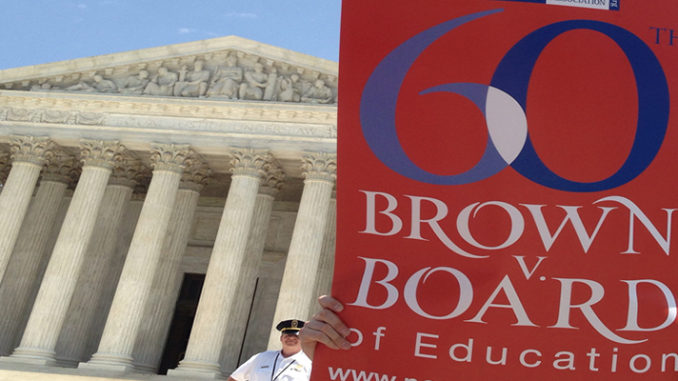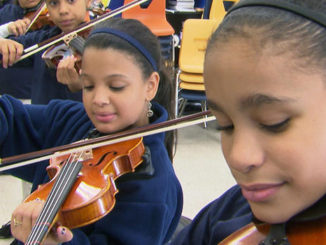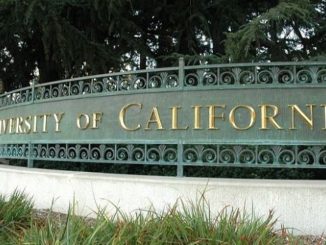
Recently the New York Times ran a story about “Deepening School Segregation,” based on the latest iteration of research from UCLA’s Civil Rights Project. Similar articles in recent years include The Atlantic’s “Schools Are More Segregated Today than During the Late 1960s,” “Segregation worse in schools 60 years after Brown v. Board of Education” from the Seattle Times, and “Segregation Worsening in U.S. Schools” from USA Today.
Such headlines understandably generate outrage. But they are also largely at odds with a competing body of rigorous research on the topic that finds that segregation has been relatively flat, or even declined, over the past few decades.
At the root of the discrepancy is an issue of measurement. If you look closely, you can probably spot the issue in this paragraph from the Times’ article that is based on the Civil Rights Project research:
Today, the decreasing white share of the public school population across the country may lead some to believe that schools are becoming more integrated. But the reverse is true, according to the report. The percentage of intensely segregated schools, defined as those where less than 10 percent of the student body is white, tripled between 1988 and 2016, from 6 to 18 percent.
Additionally, consider that the Civil Rights Project also finds that “The percentage of white students enrolled in intensely segregated white schools has also decreased from 36.1% in 2006 to…19.6% in 2016.”
These snippets might cause your spidey sense to tingle, and for good reason. The share of minority students has increased such that they now make up a majority of all students in U.S. schools, and this has implications for how we measure segregation.
The methods that scholars use to measure segregation largely fall into two categories—absolute measures and relative measures. As Sean Reardon of Stanford University and Ann Owens of University of Southern California have noted, “The debate about whether the last two decades can be characterized as a period of resegregation largely hinges” on which type of these measures one employs.
Absolute measures quantify the extent to which students from one demographic group are exposed to or isolated from another demographic group. For example, the exposure index tracks the average percentage of minority students’ peers who are white, while the isolation index tracks the average percentage of their peers who are of the same race or ethnicity. Similarly, the measure used in the Civil Rights Project’s analysis compares schools to an absolute benchmark—an “intensely segregated” school is one that enrolls more than 90% minority or white students. A similar report from the U.S. Government Accountability Office defined “isolated schools” as those in which 75% or more of students are Black or Hispanic.
Absolute measures are descriptively useful and important, but they are strongly influenced by the demographic composition of the broader school system. In an increasingly diverse America, using absolute measures for the purpose of comparing the amount of segregation across time can be misleading because they don’t account for the ongoing compositional changes in the U.S. population. Schools can appear to be more segregated merely because minority students constitute an increasingly larger share of all students. Using absolute measures to make comparisons across time is akin to comparing the price of a loaf of bread in 1988 to the price in 2015 without adjusting for inflation. Bread may appear to be more expensive when in fact, in relative terms, it is not.
The fact that school systems have different underlying compositions also confounds comparisons across geography. Consider that the Civil Rights Project finds that some of the most integrated states for black students include Nebraska, Kansas, and Minnesota, meaning these are places where black students are least likely to attend “intensely segregated” schools with student bodies that are 90% or more minority. Again, this conclusion is mainly driven by the fact the minority populations in those states are simply lower.
In contrast, relative measures of segregation take into account the underlying composition of students, making them more comparable across locations and over time. They are also conceptually different in that they measure how evenly a given population of students is distributed across an entire school system. This makes intuitive sense, as segregation implies that some students are segregated from other students—relative to some underlying pool of students a school could enroll.
This issue with measuring segregation is well-known in the academic community, and there is ample scholarly evidence using relative measures of segregation that adjust for the underlying composition of students in school systems. Using these more sophisticated relative measures, such as the dissimilarity index and the variance-ratio index, examinations of trends find that segregation has been flat or modestly decreased over the past 20 years. In summary, massive resegregation is not occurring, and students are roughly just as evenly distributed across school systems as they were 20 years ago.
To be clear, segregation and racial isolation are serious problems in America and far more common than they should be, and efforts to shed a light on these problems are commendable. At every point in time between the Brown decision in 1954 and 2019, millions of American children have been educated in separate and unequal schools. This is an outrage that demands serious attention and action. But as we devise strategies and search for solutions, it is imperative that we are motivated by a complete picture of the problem we are trying to address. Segregation is a serious enough problem that it shouldn’t need to be worsening to be alarming. It’s bad enough as is.
Dr. Brian Kisida is an Assistant Professor in the Truman School of Public Affairs at the University of Missouri. Olivia Piontek, MPA, is a recent graduate of the Truman School.


